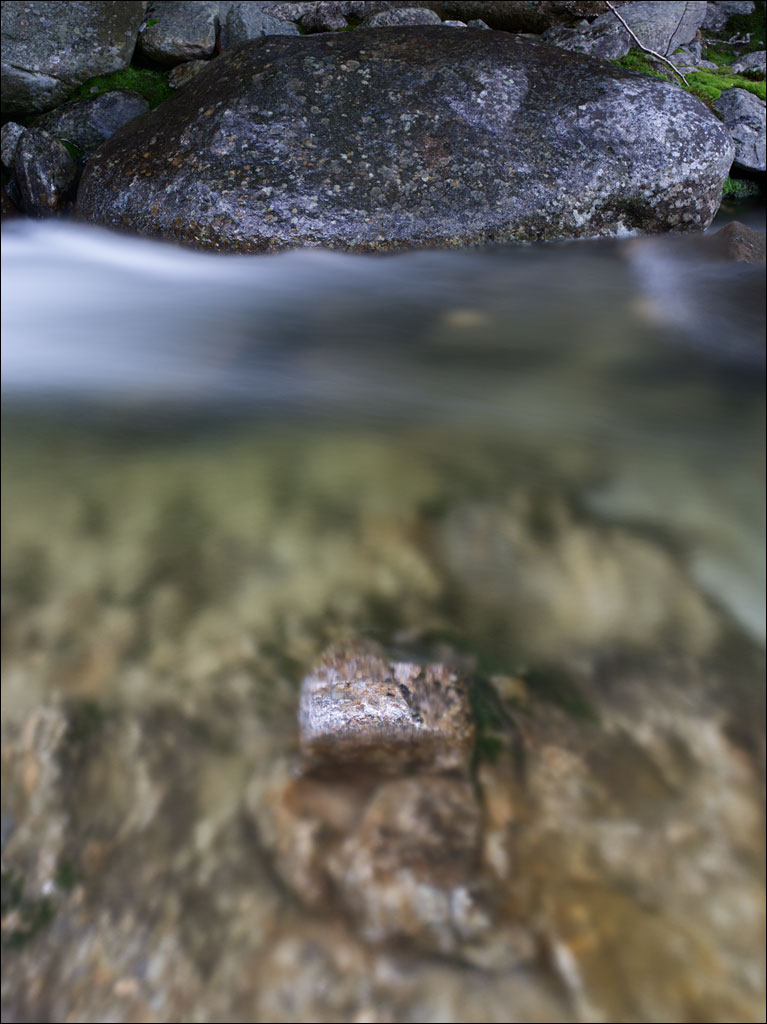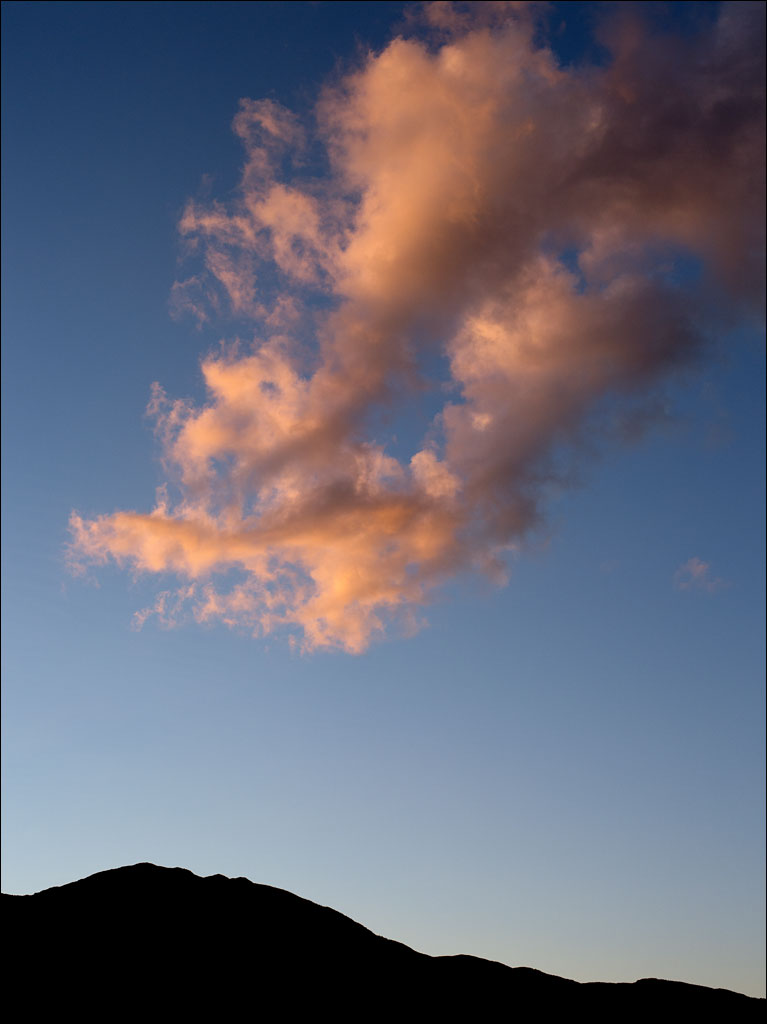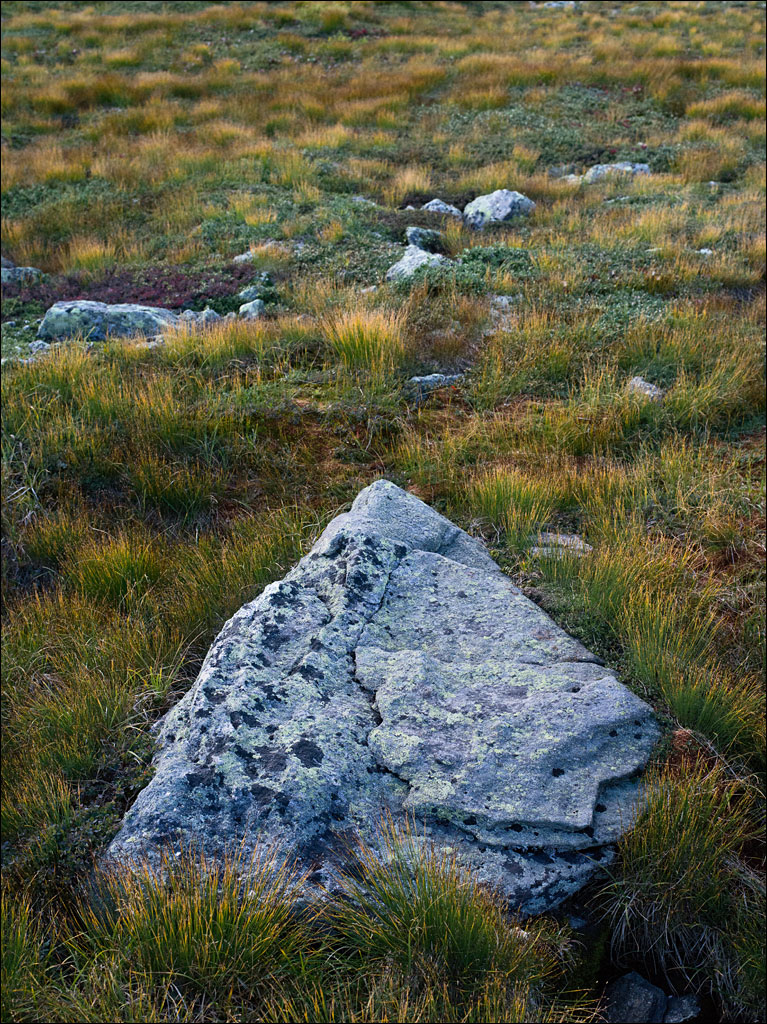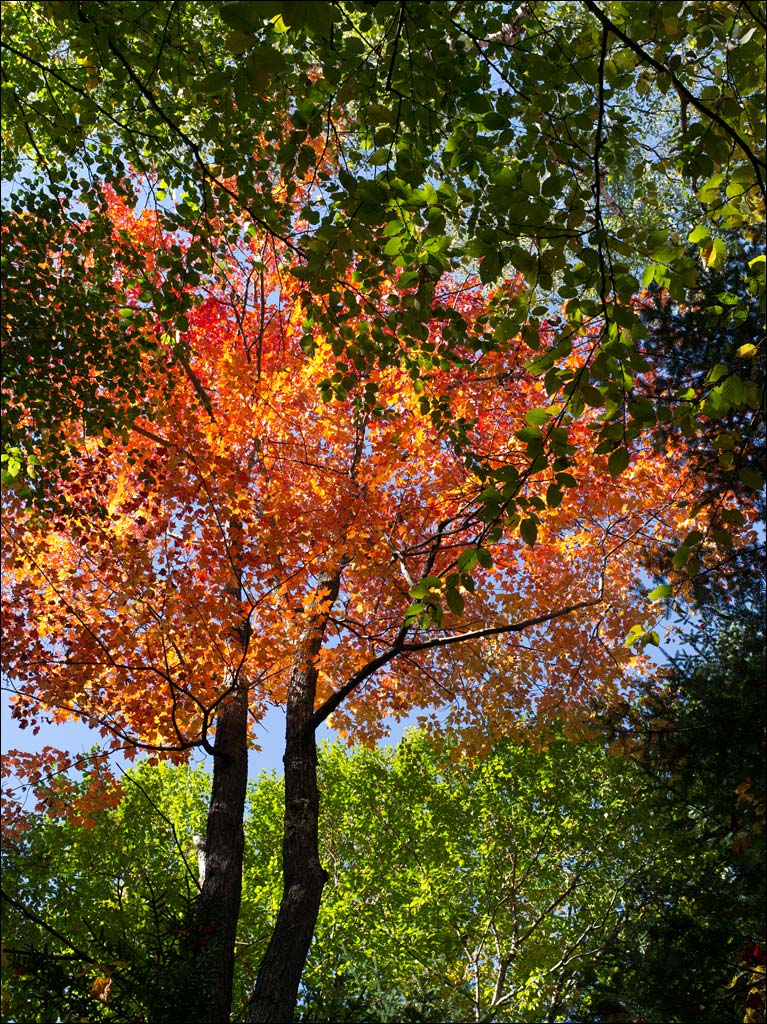 Foliage season has come to New England. The season peaks in mid-October, but I have always enjoyed the period at the end of September, when the blaze of reds and oranges are contrasted with the lingering greens of summer. With the vivid blue skies of autumn, the season is a celebration of color. Click on the image for a larger view.
Foliage season has come to New England. The season peaks in mid-October, but I have always enjoyed the period at the end of September, when the blaze of reds and oranges are contrasted with the lingering greens of summer. With the vivid blue skies of autumn, the season is a celebration of color. Click on the image for a larger view.
Category Archives: New England
Wood, Rock, Water
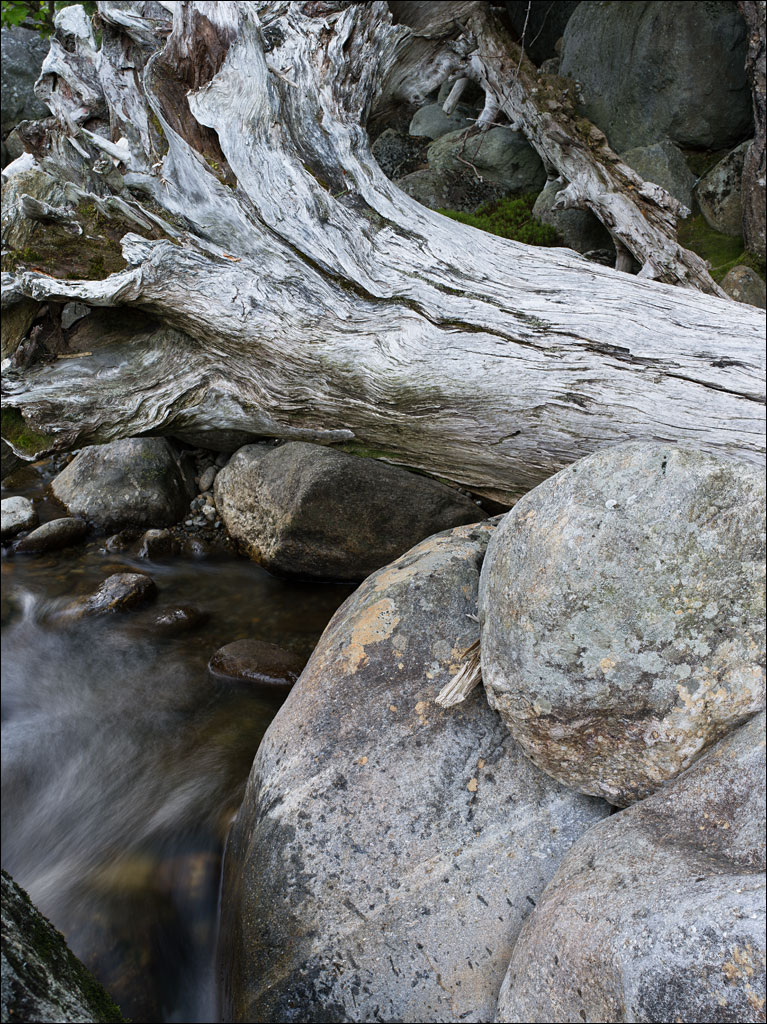 The west branch of the Peabody River flows down the Great Gulf Wilderness Area. It is not so much a river like the bodies of flat water that meander through landscapes, but more of an oversized mountain stream moving through and over rocks and boulders. Click on the image for a larger view.
The west branch of the Peabody River flows down the Great Gulf Wilderness Area. It is not so much a river like the bodies of flat water that meander through landscapes, but more of an oversized mountain stream moving through and over rocks and boulders. Click on the image for a larger view.
The Northern Forest
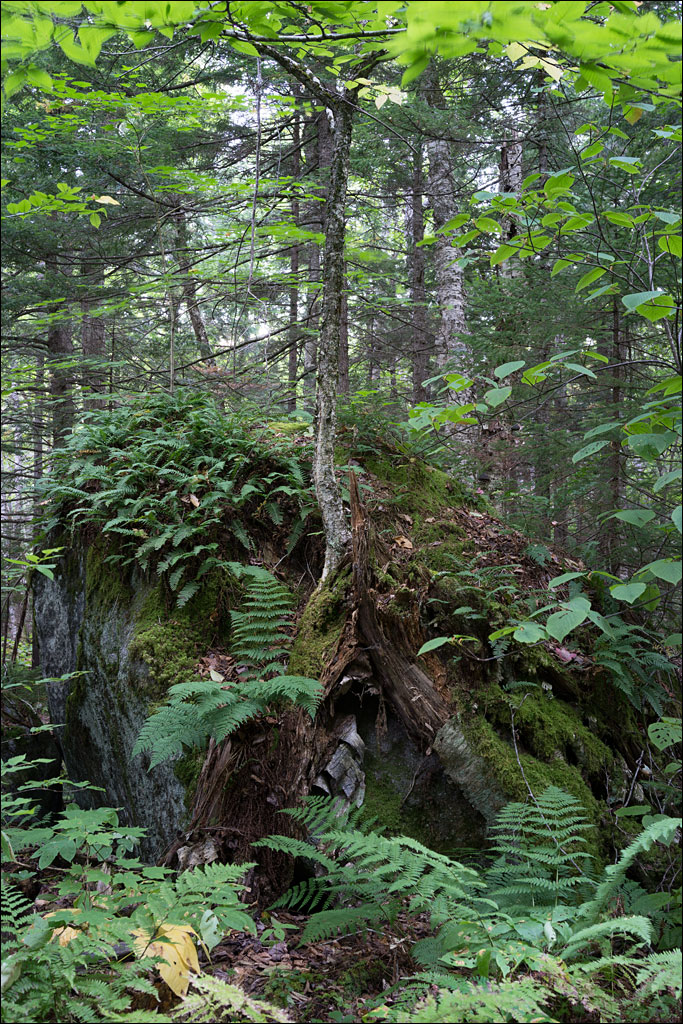 Naomi and I took a trip to the Great Gulf Wilderness Area last weekend. Instead of standing on the head wall of the glacial cirque, we had entered the base of the valley. The Northern Forest is a unique ecosystem that stretches from the Adirondacks in northern New York, through Vermont, New Hampshire, Maine, and into the Canadian maritime provinces. At the base of Mt. Washington, the forest is mixed. The structure is complex: life carves out spaces in a three-dimensional world that stretches from the forest floor to the canopy. Even glacial erratics, large rocks dropped by retreating glaciers, become home to fern, moss, and trees. Click on the image for a larger view.
Naomi and I took a trip to the Great Gulf Wilderness Area last weekend. Instead of standing on the head wall of the glacial cirque, we had entered the base of the valley. The Northern Forest is a unique ecosystem that stretches from the Adirondacks in northern New York, through Vermont, New Hampshire, Maine, and into the Canadian maritime provinces. At the base of Mt. Washington, the forest is mixed. The structure is complex: life carves out spaces in a three-dimensional world that stretches from the forest floor to the canopy. Even glacial erratics, large rocks dropped by retreating glaciers, become home to fern, moss, and trees. Click on the image for a larger view.
Living on Edges
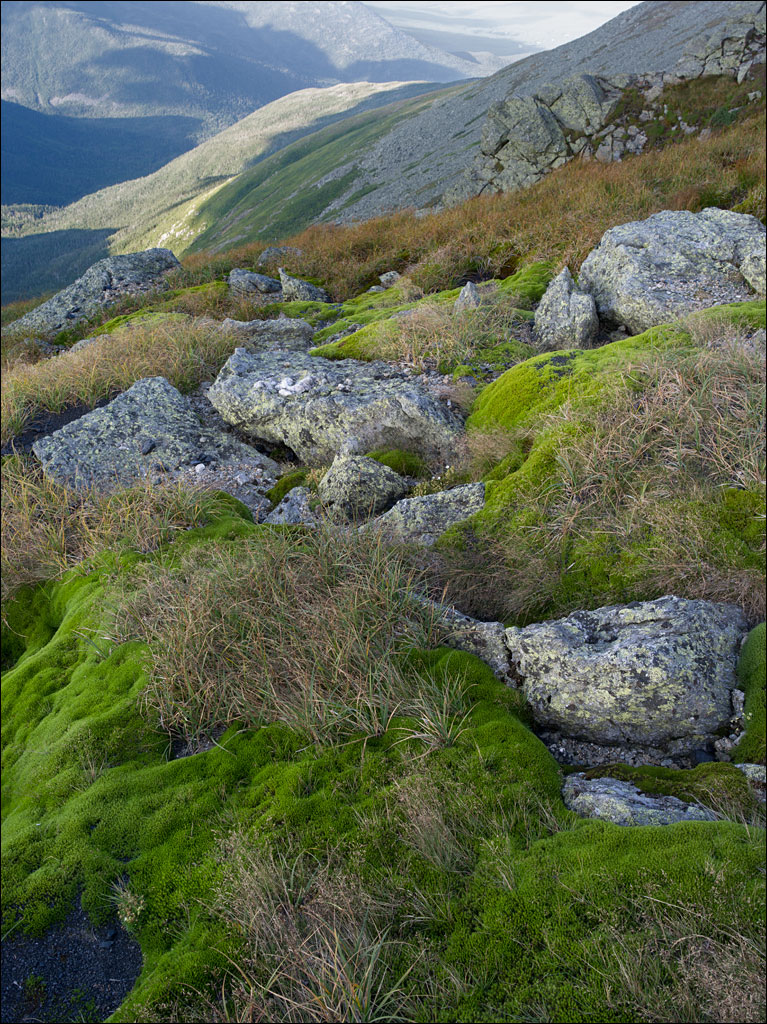 The tenacity of life, the ability to hang onto existence in some of the harshest conditions, always amazes me. A delicate balance that does not take very much to lose—a few footsteps from a careless hiker could cause irreparable damage, as could a rock slide. Climate is a constant source of stress. This collection of moss, grass, and wild flowers is at the head of the glacial cirque that is home to the Great Gulf Wilderness Area, just below the summit of Mt. Washington in New Hampshire. Click on the image for a larger view.
The tenacity of life, the ability to hang onto existence in some of the harshest conditions, always amazes me. A delicate balance that does not take very much to lose—a few footsteps from a careless hiker could cause irreparable damage, as could a rock slide. Climate is a constant source of stress. This collection of moss, grass, and wild flowers is at the head of the glacial cirque that is home to the Great Gulf Wilderness Area, just below the summit of Mt. Washington in New Hampshire. Click on the image for a larger view.
Space, Time.
Mountain Sunset
Alpine Garden
Mt. Washington
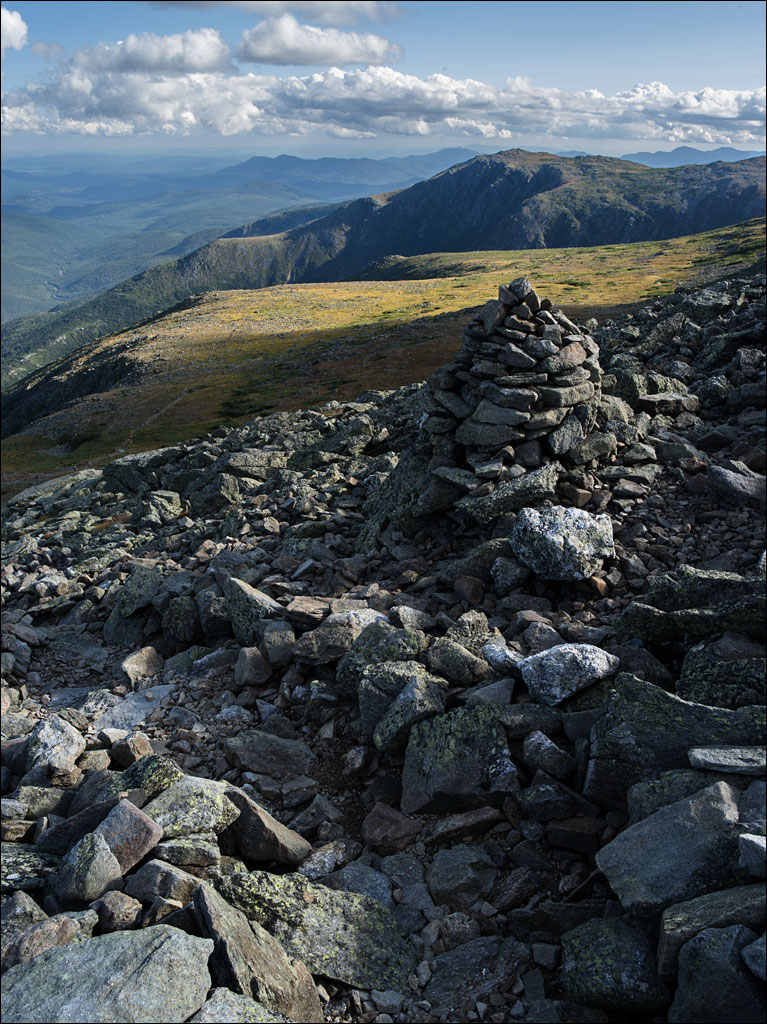 Mt Washington, located in the White Mountain National Forest, is the highest peak in New England at 6,288 ft. or 1,917m. While not particularly tall, the climate can be harsh. The fastest recorded wind gusts on the surface of the Earth were measured here on April 12th 1934: 231 mph or 372 km/h. Winters temperatures are extreme, reaching to below –40º. Even in the summer, the summit temperatures are rarely above the mid 50sºF, about 12ºC. And when you visit, there is a good chance of rain or snow.
Mt Washington, located in the White Mountain National Forest, is the highest peak in New England at 6,288 ft. or 1,917m. While not particularly tall, the climate can be harsh. The fastest recorded wind gusts on the surface of the Earth were measured here on April 12th 1934: 231 mph or 372 km/h. Winters temperatures are extreme, reaching to below –40º. Even in the summer, the summit temperatures are rarely above the mid 50sºF, about 12ºC. And when you visit, there is a good chance of rain or snow.
The mountain was originally known to the Abenaki as Agiocochook, “Home of the Great Spirit.” The spirit of the revered Abenaki chief Passaconaway was said to have ascended into heaven from this peak.
This view is from just below the summit near Nelson Crag. Alpine Garden and the head of Tuckerman Ravine are just below. Click on the image for a larger view.
White Mountain National Forest
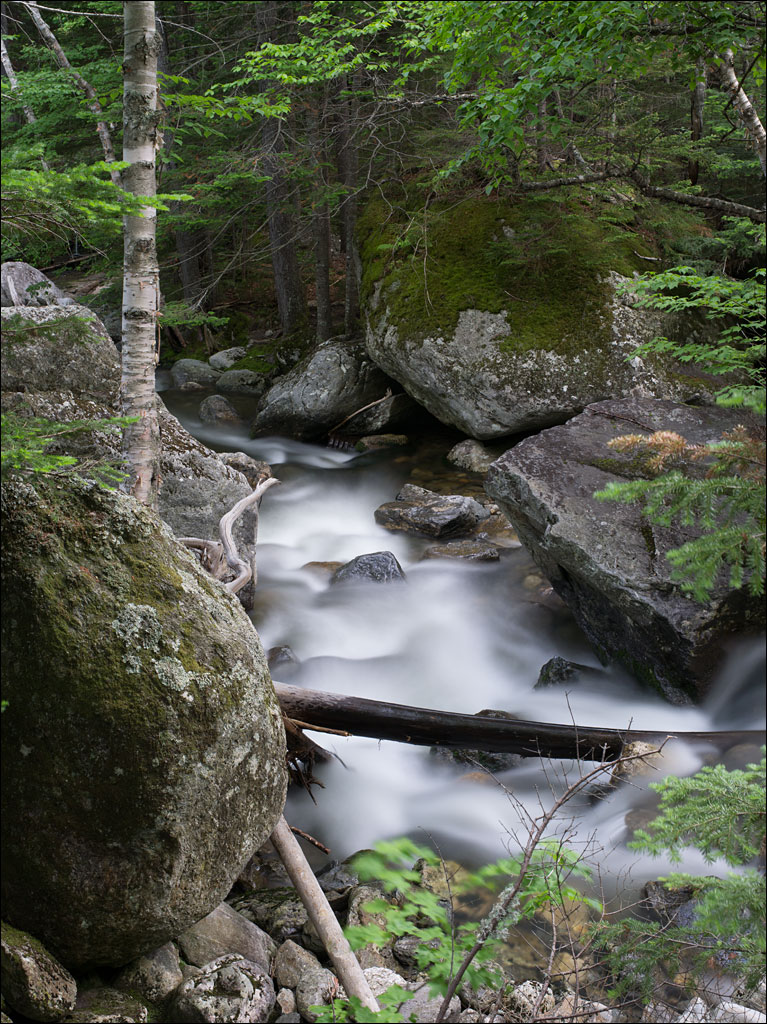 The White Mountain National Forest is one of the largest wilderness areas in New England, covering 1,225 sq. miles or 3,039 km². While many come to this area for the mountains, there is plenty to explore below the peaks. Ellis River runs off Mt. Washington and down Pinkham Notch. Click on the image for a larger view.
The White Mountain National Forest is one of the largest wilderness areas in New England, covering 1,225 sq. miles or 3,039 km². While many come to this area for the mountains, there is plenty to explore below the peaks. Ellis River runs off Mt. Washington and down Pinkham Notch. Click on the image for a larger view.
Crawford Notch State Park, NH
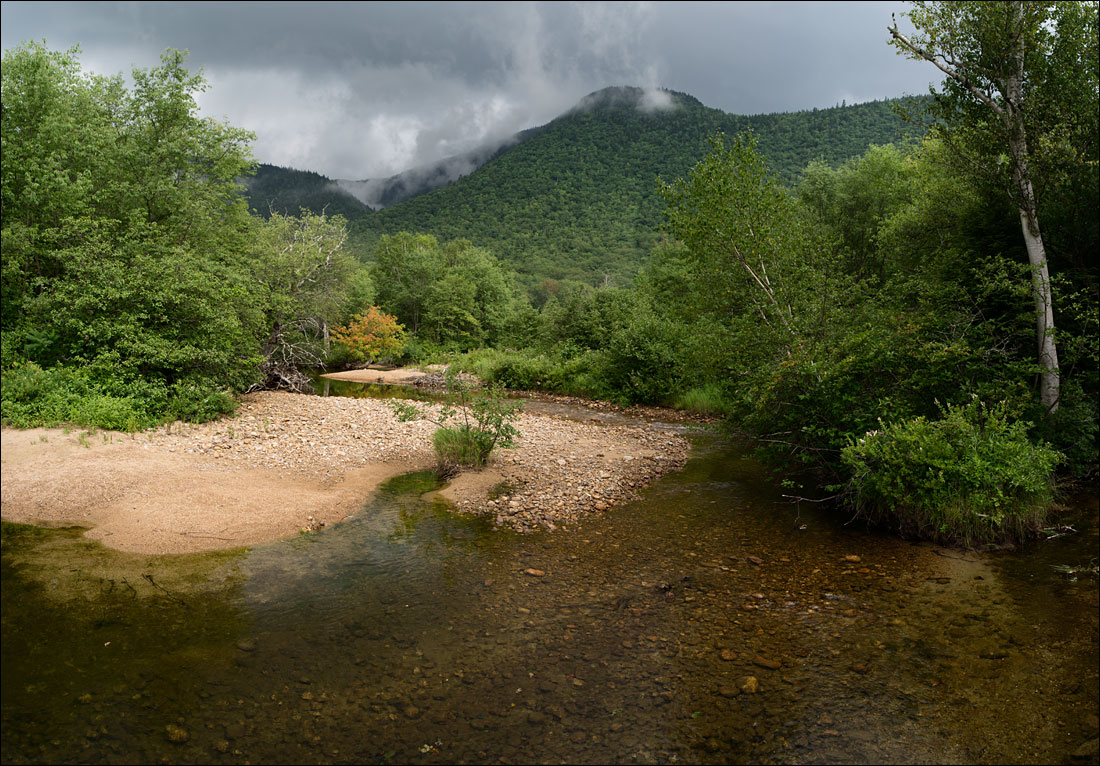 The White Mountains in New Hampshire is home to Crawford Notch State Park. The park is in the middle of one of the largest national wilderness areas in New England, the White Mountain National Forest. This area is known for its beauty and weather; rain and snow are a constant threat in these mountains. Crawford Notch is also the source for the Saco River that follows through Maine and into the Atlantic Ocean. Click on the image for a larger view.
The White Mountains in New Hampshire is home to Crawford Notch State Park. The park is in the middle of one of the largest national wilderness areas in New England, the White Mountain National Forest. This area is known for its beauty and weather; rain and snow are a constant threat in these mountains. Crawford Notch is also the source for the Saco River that follows through Maine and into the Atlantic Ocean. Click on the image for a larger view.

